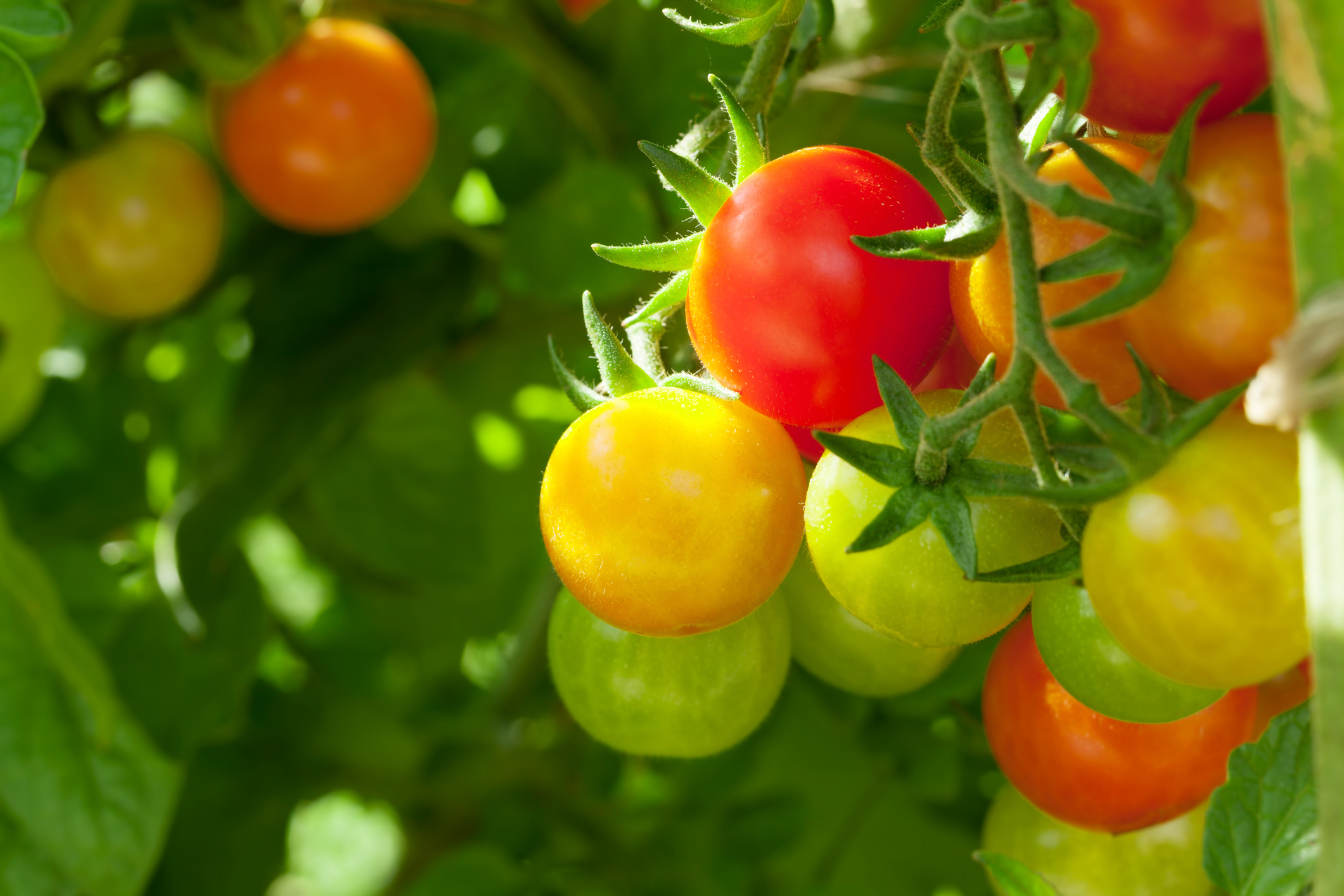Tomatoes are my wife Anna’s favourite ingredient, says Tim Dover, chef patron of The Roost Restaurant, Bridge of Earn. She is delighted that there are now far more varieties on sale in the supermarket than ever before and is fussy about which sort of tomatoes she uses for dishes. Small cherry tomatoes are perfect for salads, but the more orangey ones are better for tarts, cooked with cheese for instance.
Despite more varieties of tomato available in supermarkets these days, they are usually fairly homogenous – yet an amazing diversity of tomatoes does still exist, in ranges of shape, colour, size, cooking quality and taste.
Heritage vegetable growers have access to many far more interesting and diverse tomato seeds than we often see in the shops. They call them heirloom tomatoes in the US and seeds are carefully stored and distributed sparingly.
The diversity of heritage tomatoes is endless – the fruit can be red, pink, orange, yellow, black, green or white and they can have stripes or streaks. Some are perfectly round, but most are oval or pear shaped with ridges and bulges. They vary so much in appearance that of course the texture and flavour of their flesh is also very different.
There are well over 150 varieties grown in the UK, and many more hundreds of other varieties kept in seed banks in North America. They’re grown for interest’s sake by many, but now that people are becoming more interested and aware of flavour quality in ingredients, they also have commercial value which is allowing heritage vegetable growers to produce and supply them to restaurants and caterers.
For me, it means that tomatoes are being showcased in salads and dishes, rather than just being fillers. One of the main uses for tomatoes is for sauce, and seeking the correct variety is also important to make that perfect Italian-style tomato sauce – use fresh plum tomatoes or at least tomatoes with quite firm flesh that are not too watery, so that when they break down they produce a sauce rather than a thin juice.
In my opinion the secret to great tomato sauce is the quality of the tomato, and very little about the cooking – it makes all the difference.
Here is the most simple of tomato sauce recipes that I hope you will use and enjoy: If using fresh plum tomatoes you need about 1 kilo in weight, or you can use 2 cans instead. Place the chopped, peeled tomatoes into a pot together with a medium onion which is peeled and cut in half (horizontally), 75g of butter and a teaspoon of salt. Cook all together uncovered at a very slow simmer for 45 minutes or until the fat floats free. Stir occasionally and make sure that the tomatoes are completely broken down with the back of a wooden spoon. When the cooking time is over, simply remove and discard the onion, season to taste and serve.
Chef’s tip
Italians always say that if you have to use tinned tomatoes for sauce, that the best plum tomatoes are the San Marzano variety with no sauce in the can, nothing but the whole peeled tomato and a very little of their juice.
If using fresh tomatoes, don’t keep them in the fridge – they will taste better.











